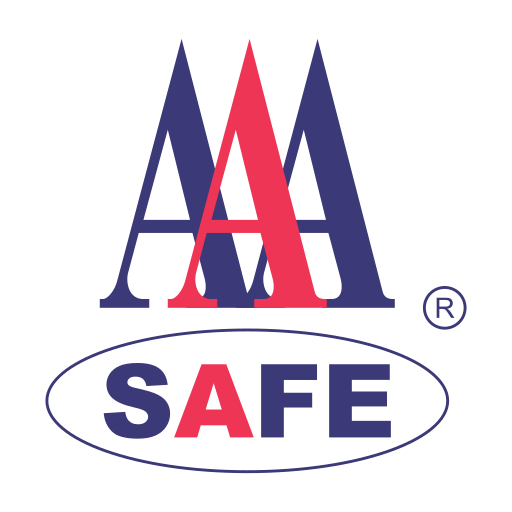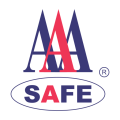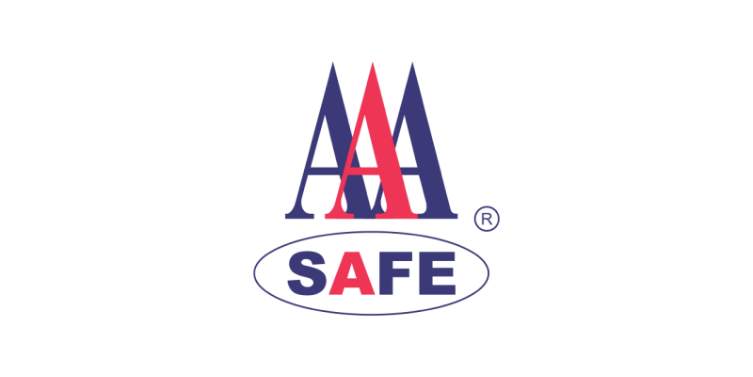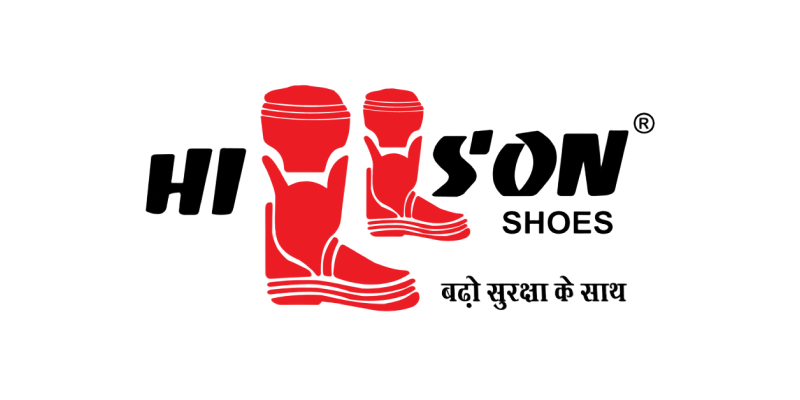- Industries We Serve
Electrical and Power Safety Equipment
Protect your workforce with top-tier electrical safety solutions
from AAA Safe, ensuring operational continuity and
compliance in the MEA region.

SEND AN INQUIRY
AAA Safe - Your Trusted Partner in Electrical Safety for Over 20 Years
- Types of Service:
Top-notch customer service with a focus on innovative safety solutions.
- Regions Covered:
Serving businesses across the Middle East and Africa (MEA) region.
- Legal Considerations:
Understanding regional legal requirements and safety standards for electrical equipment in the MEA.
- Variety and Depth of Equipment:
Comprehensive range of electrical and power safety equipment to meet various business needs.
Why is Electrical and Power
Safety Equipment Important?
Electricity is a vital part of our modern world, but it also carries inherent risks. Electrical accidents can cause severe injuries, fatalities, and property damage. Implementing a robust electrical safety program that includes proper equipment is essential for mitigating these risks and fostering a safe work environment.
Legal Requirements for Electrical and Power Safety Equipment in the MEA Region (Disclaimer: Information accurate as of June 26, 2024, but subject to change. Always consult with local authorities for the most up-to-date regulations.)
The Middle East and Africa (MEA) region encompasses a diverse range of countries, each with its own regulatory framework for electrical safety. However, some general principles and prominent regulatory bodies can provide a helpful starting point.
- Focus on worker safety: All regulations prioritize protecting workers from electrical hazards.
- Compliance with international standards: Many countries in the MEA region reference established international standards for electrical safety equipment, such as those set by the International Electrotechnical Commission (IEC).
- Local variations: Specific requirements and enforcement might vary by country. Consulting with local authorities or safety experts is crucial for ensuring adherence to all applicable regulations.
- International Electrotechnical Commission (IEC): The IEC publishes a wide range of international standards for electrical equipment, including safety standards. While not directly enforceable, many MEA countries reference IEC standards in their national regulations.
- Occupational Safety and Health (OSH) Authorities: Each country within the MEA region likely has its own OSH authority responsible for developing and enforcing workplace safety regulations. Examples include:
- The Ministry of Health and Prevention (MOHAP) – UAE
- The Health and Safety Executive (HSE) – Kingdom of Saudi Arabia
- The Egyptian National Institute for Occupational Safety and Health (NIOSH)
Here are some resources for further exploration (be sure to check the date of publication for any updates):
- International Electrotechnical Commission (IEC): https://www.iec.ch/homepage
- The Gulf Cooperation Council (GCC) Standardization Committee (GSO): https://www.gso.org.sa/en/ (The GSO publishes harmonized standards for the member states of the GCC, which includes some countries in the MEA region)
Remember: It’s always best to consult with a qualified safety professional or your local authorities to ensure you have the most up-to-date information on electrical safety equipment regulations specific to your location within the MEA region.
Different Types of Electrical and Power
Safety Equipment
Personal Protective Equipment
This includes insulating gloves, sleeves, boots, face shields, and safety glasses specifically designed for electrical work.
Arc Flash
Protection
Arc flash suits, helmets, and balaclavas shield workers from the intense heat and light emitted during electrical arcing faults.
Insulating Tools
& Mats
Tools with insulated handles and non-conductive mats minimize the risk of electrical shock.
Voltage Testers and Multimeters
These instruments help electricians verify electrical isolation and identify potential hazards.
Grounding and Bonding Equipment
Grounding clamps and bonding jumpers ensure proper grounding to prevent stray voltage and electrical shock.
Safety Signage
& Labels
Clearly visible signs and labels warn personnel of electrical hazards and safety procedures
10 Examples of PPE for Electrical & Power Safety
1. Insulating Gloves
Rated for specific voltage levels, these gloves protect wearers from electrical shock.
2. Leather Protectors
Worn over insulating gloves, leather protectors enhance durability and grip.
3. Insulating Sleeves
Extend protection beyond the wrists, safeguarding forearms from accidental contact.
4. Insulating Boots
Offer protection from ground faults and prevent electrical shock when working on energized equipment.
5. Face Shields
Shield the face from electrical arcing and flying debris during electrical faults.
6. Safety Glasses with Side Shields
Protect the eyes from electrical flashes, dust, and other debris.
7. Arc Flash Suits
Provide comprehensive protection from the intense heat and light of an arc flash event.
8. Arc Flash Helmets
Offer additional head and facial protection during arc flash incidents.
9. Arc Flash Balaclavas
Protect the neck and ears from arc flash burns.
10. Flame-Resistant Clothing
Garments made from flame-resistant materials minimize the risk of burns from electrical arcing.
Additional Safety Gear Considerations
Beyond the core equipment categories mentioned above, consider these additional factors:
Work environment
Specific electrical hazards might necessitate specialized equipment
Job tasks
The type of electrical work being performed will influence the required PPE
Worker comfort
Choose equipment that offers adequate protection without compromising comfort and mobility.
Benefits of Using Electrical and Power
Safety Equipment
Investing in electrical and power safety equipment offers a multitude of benefits, including:
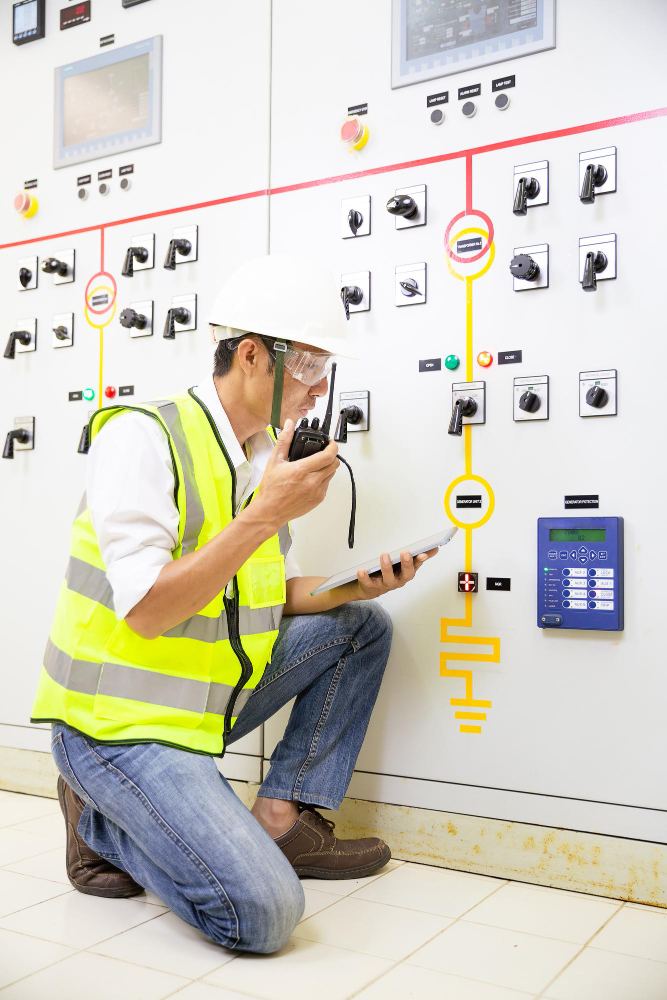
Reduced risk of electrical accidents
Proper equipment minimizes the risk of electrical shock, burns, and other injuries.
Improved worker safety
A safe work environment boosts employee morale and reduces absenteeism.
Enhanced regulatory compliance
Utilizing proper equipment demonstrates adherence to safety regulations.
Lower insurance costs
A strong safety record can lead to lower workers' compensation premiums.
Minimized downtime
Electrical accidents can disrupt operations; proper safety measures minimize downtime.
Reduced downtime costs
Electrical accidents can cause significant production delays and disrupt vital operations. Investing in safety equipment minimizes downtime and associated costs.
Construction
Workers on construction sites face hazards from exposed wiring, power tools, and temporary electrical systems. Utilizing insulated tools, ground fault circuit interrupters (GFCIs), and arc flash suits can significantly reduce these risks.
Oil & Gas
Oil and gas refineries and drilling operations involve environments with flammable materials and potential exposure to high voltage. Flame-resistant clothing, intrinsically safe tools, and proper grounding equipment are essential for worker safety in these settings.
Manufacturing
Manufacturing facilities often have complex electrical systems and machinery. Utilizing voltage testers, lockout/tagout procedures, and appropriate PPE (gloves, safety glasses) safeguards workers from electrical hazards.
Common Electrical Safety Applications in the MEA Region
The Middle East and Africa (MEA) region is experiencing rapid growth across various industries. This presents both exciting opportunities and potential electrical safety challenges. Here’s a brief look at some common electrical hazards encountered in different MEA sectors, along with how proper safety equipment can play a crucial role:
Choosing the Right Electrical and Power
Safety Equipment
Selecting the appropriate electrical and power safety equipment requires careful consideration. Here are some key factors to keep in mind
Hazard assessment
Identify the specific electrical hazards present in your workplace.
Equipment ratings
Ensure chosen equipment has voltage ratings suitable for the electrical systems being worked on.
User training
In addition to providing safety training, highlight the importance of training workers on the proper care and maintenance of their electrical safety equipment.
User comfort and fit
Opt for equipment that offers adequate protection while allowing for comfortable movement.
Regular maintenance and inspection
Emphasize the importance of regularly maintaining and inspecting electrical safety equipment to ensure its effectiveness.
Compliance with standards
Choose equipment that complies with relevant safety standards (e.g., IEC)
AAA Safe: Your Partner in Electrical and
Power Safety Equipment
Our dedication to excellence is reflected in several key aspects:
For over two decades, AAA Safe has established itself as a leading supplier of electrical and power safety equipment in the Middle East and Africa (MEA) region. Our unwavering commitment to safety goes beyond providing top-notch products. We partner with businesses to create a comprehensive electrical safety culture, ensuring a secure work environment for your workforce.
We offer a vast selection of electrical and power safety equipment, encompassing Personal Protective Equipment (PPE), arc flash protection gear, insulating tools and mats, voltage testers, grounding equipment, and safety signage. This one-stop-shop approach simplifies your procurement process and ensures you have access to the essential equipment needed for any electrical task.
We understand that safety equipment is an investment, and we prioritize providing exceptional customer service. Our team of knowledgeable specialists is readily available to assist you with product selection, answer technical questions, and offer guidance on regulatory compliance within the MEA region.
AAA Safe goes beyond simply selling equipment. We offer comprehensive electrical safety training programs designed to educate your workforce on proper safety protocols, hazard identification, and the appropriate use of safety equipment. This proactive approach empowers your employees to make informed decisions and work safely in electrical environments.
The electrical safety landscape is constantly evolving. We actively stay abreast of the latest advancements in safety technology and incorporate innovative products into our offerings. This ensures you have access to the most up-to-date equipment to mitigate emerging electrical hazards.
Local Expertise
At AAA Safe, we understand that navigating electrical safety regulations in the MEA region can be complex. Regulations can vary by country, and staying updated is crucial for ensuring compliance. Our team of specialists actively monitors the evolving regulatory landscape within the MEA region. We offer consultations to help businesses navigate these regulations and select the appropriate safety equipment to meet local requirements.
Contact Us Today!
Ensure your workplace is safe with AAA Safe Somalia.
Contact us now for customized safety solutions tailored to your industry needs.
Conclusion
Prioritizing electrical safety is not just about compliance; it’s about safeguarding your most valuable asset – your workforce. By partnering with AAA Safe, you gain a reliable and experienced partner committed to providing the resources and expertise necessary to create a safer and more productive work environment.
We invite you to explore our comprehensive range of electrical and power safety equipment and contact our team of specialists to discuss your specific needs. Together, we can build a robust electrical safety program that fosters a culture of safety within your organization.
